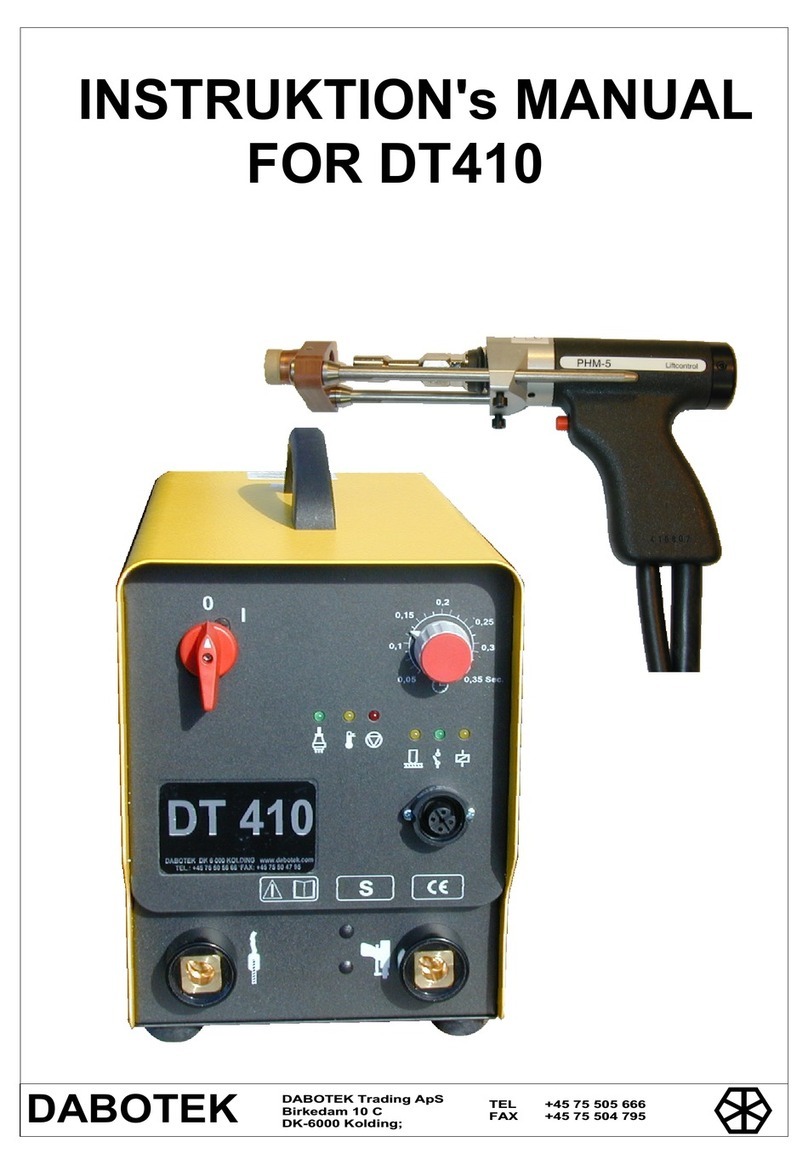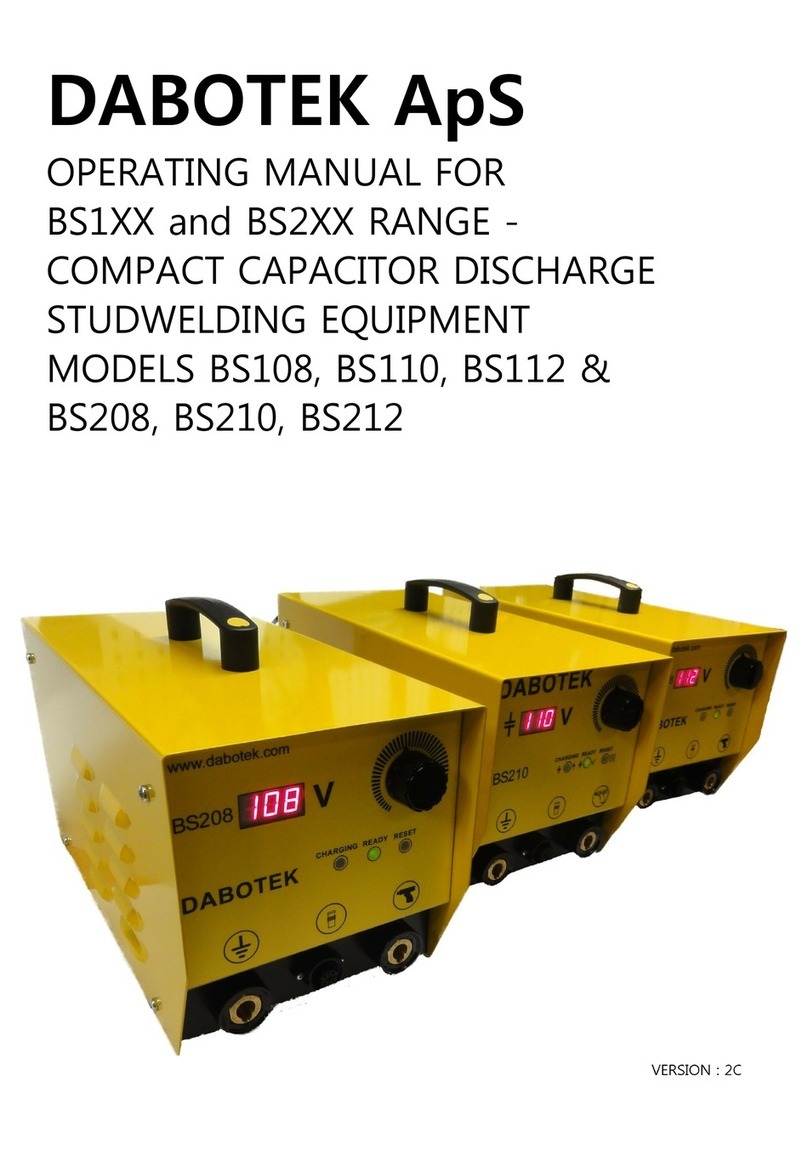
5
GENERAL INFORMATION
User Responsibility
DABOTEK Welding warrants that The DT1200i will perform in accordance with the product
description in this manual. The Factory Warranty will be null and void should the user attempt
to operate The Studhorse after it has malfunctioned. Parts that are broken, missing or worn
must be replaced immediately. DABOTEK Welding Equipment LLC or its Authorized Repair
Center will perform warranty Repairs. The Studhorse or any of its parts must not be altered
without the prior written approval of DABOTEK Welding Equipment LLC. Any malfunction
resulting from improper use, faulty maintenance, physical damage, unapproved repair or
alteration, shall be the sole responsibility of the user or owner.Any repair to improperly used or
abused equipment by DABOTEK Welding Equipment LLC will be charged based on DABOTEK’s
applicable hourly labor rate and current replacement part prices.
Manufacturer’s Limited Product Warranty
DABOTEK Welding Equipment’s only warranty is that goods being sold will be free from defects
in materials and workmanship. This express warranty is in lieu of any other warranties, either
expressed or implied, and whether statutory or otherwise, including any implied warranty of
merchantability or fitness for a particular purpose.
The Manufacturer’s written warranty for The DT1200i Stud Welder has been included with your
new machine, and is limited to defect in materials or workmanship. The original purchaser must
furnish notice of defect or failure to DABOTEK Welding Equipment or one of DABOTEK’s
authorized repair centers using an approved Warranty Claim Form. Forms can be downloaded
from the company Web Site at
http://www.dabotek.com
. The guarantee against
corrosion-related failures can be extended to five-years by completing the Registration Form.
Any equipment that has been modified by any party other than DABOTEK Welding Equipment
LLC, or equipment that has been improperly installed, improperly operated, misused based upon
industry standards, improperly maintained or equipment which has been used for operation
outside of specifications will not be covered under the manufacturer’s warranty. DABOTEK
Welding Equipment shall in no way be liable for any consequential damages.
DABOTEK Welding Equipment reserves the right to make engineering and/or part changes at
any time, without notice, as improvements in quality or design are made. Owners and operators
of The DT1200i should access the company Web site listed above to keep up-to-date with
offerings, applications and technical suggestions.
SAFETY STANDARDS
The DT1200i is designed and built to comply with the following safety standards:
Underwriters Laboratories Standard UL551
Safety EN 60974-1
Degree of Enclosure Protection IP 24 in accordance with ISO 60529
•Protection against full penetration of solid foreign objects of 12.5mm diameter and larger.
•Protection against harmful effects from splashing water against the enclosure from any
direction.






























